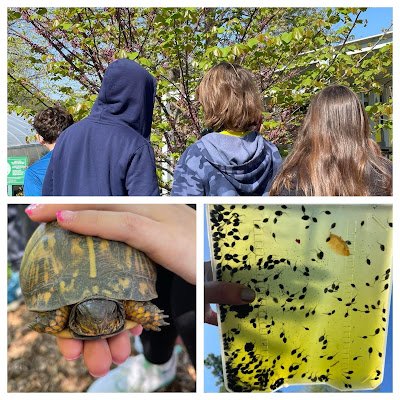After yesterday’s post you might be surprised to see this photo of students tackling a math problem.
Image from Glenwood Academy. Used with permission.
Take a closer look at the math problem.
They’re making “Stick Stew.”
Measuring, doubling, and halving ingredients for our 'Stick Stew'. Even basic recipes require math skills. Making recipes larger or smaller can take you even deeper into fractions, multiplication, and division! - - Glenwood Academy
As someone who had terrible experiences with math throughout my education, I thought, “Wow! That looks like fun!”
As a career early childhood educator, I wondered, “But did they really get to go out and make ‘Stick Stew’ with real sticks?”
Glenwood Academy is described on the The Maryland Association of Nonpublic Special Education Facilities (MANSEF) website as follows:
GA embraces and empowers all students with language-based learning differences such as dysgraphia, dyscalculia, dyslexia, and language processing difficulties. Through an engaging, multi-sensory, developmental, language-intensive curriculum, we work towards helping all of our students to evolve and discover his or her individual potential for greatness.
What caught my eye, of course, was the engaging presentation of the math lesson. What sparked my imagination was the potential for a multi-sensory experience with sticks and leaves. I don’t know if this particular lesson culminated in a hands-on nature experience, but GA’s social media posts document a curriculum filled with “engaging, multi-sensory, developmental, language-intensive” learning experiences.
Around the same time that I was contemplating this photo, I came across a quote from Chiara D’Amore, founder and CEO of the Community Ecology Institute:
At heart, I am an experiential environmental educator. I love little more than getting folks out into nature and helping them learn about why and how we should care for the ecosystem of which we are a part and on which we ultimately depend. And the true joy it brings people, especially in an age in which we spend so much time inside on screens, is some of the best medicine.
D’Amore illustrates this statement with photographs taken while engaging with students in CEI programs.
And here’s how CEI describes its overall program goals:
We create innovative, meaningful experiential education programs for people across the lifespan.





Comments
Post a Comment